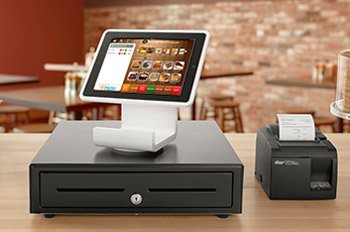Why You Should Invest in an iPad Point of Sale System
In recent years, the iPad point of sale system has seen a marked increase in the amount and level of integration it has enjoyed in traditional retail businesses. More and more companies are looking at making the iPad point of sale system something that they can depend on and use over a period of time. It helps that the system is easy to install, upgrade, maintain and use across multiple locations.
There are a lot of places, such as that you can source the relevant parts of a point of sale system or the entire system in one simple, cost effective package. There are quite a number of ways the iPad system differs from and is better than the alternatives. Here we take a look at the more popular ones.
Introducing the Cloud
Retail companies that have been around for a while that use a distributed inventory management system can tell you what happens when you put your faith in a system that operates over a network and the network fails. The crash can be spectacular and terrible. The iPad avoids that by introducing something that Apple describes as ““. Cloud storage is using an internet location to store information off-site, so that in the case of a system malfunction the information is retained at the cloud location so that no data loss is incurred.
The theory behind it is that if the operating terminal (in this case the iPad) has a system malfunction and it needs to reboot or cannot restart, then the information stored from this particular terminal can be recovered quickly and easily ensuring that the setting and data on the terminal can be returned to its pre-crash state. The cloud also enables the use of data crunching apps to give a real-time picture of sales numbers. Since the cloud is an online storage service, it is not limited by geographical factors and as such, companies that have outlets in different areas can benefit from the use of the cloud.
Backup and Security
Once again the cloud comes to the rescue here, allowing for a of a “home database” to be done regularly on the cloud. The home database can house the information for the entire company, ranging from prices to product ID’s to sales numbers for each product. It consolidates the management of inventory into the inspection and auditing of a single database. This database can be stored using the cloud in a secure, off-site location.
Backups can be done regularly and without hassle since once the backup is scheduled, the iPad automatically goes through with the backup. Failure of a server in a business that has multiple outlets can also be a major disaster. However, with the cloud backup of the home database, restoring the functionality of the business can take a fraction of the time it would have taken traditionally. The cloud saves time and money.
Productivity and Management Monitoring
In the old days of factory work, people used to walk into the factory and punch a card when they got in and punch it when they left. Time cards are a thing of the past, but the system hasn’t truly been upgraded, it has simply been replaced with technology that does the same thing. An iPad point of sale terminal has a unique change to the system.
It allows a single user to login and whilst that user is logged in the data from the terminal can be noted as coming from that user account. This works much better as a means of tracking employee production and movement at a point of sale terminal. It also bestows a level of responsibility on the cashier, since all transactions are done under her name and thus she would be held responsible in case something went wrong.
The iPad is a brilliant new invention and with its affordability small and medium enterprises can incorporate a cost-effective point of sale solution in their businesses easily. Not only does the system allow for a cheap method of cashing out items, but also provides a system for tracking employees, and backing up information on each terminal at a remote location. Hardware faults are inescapable and by providing a built-in way of dealing with situations such as these, the iPad has gone one step ahead of traditional point of sale terminals.
When considering the pros and cons of a point of sale system, the iPad has a lot of the positives without much of the negatives. It brings to the for a new age of incorporating technology to do simple tasks. As a labor saving device the iPad is well suited to doing the job of a much more costly piece of hardware. However, it not only manages to compete with the traditional point of sale systems, but to surpass them many times over. The result is a well-rounded, cost effective piece of hardware that goes well beyond the needs of the company.





